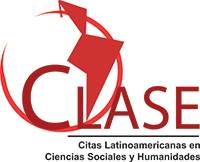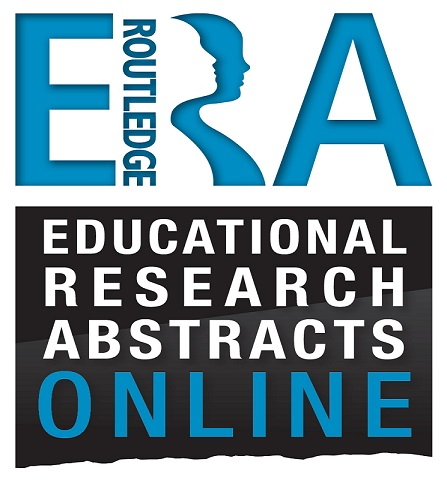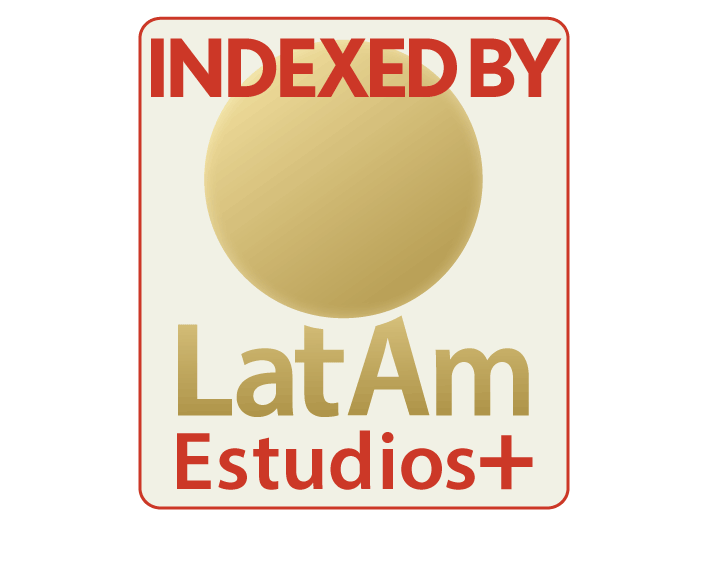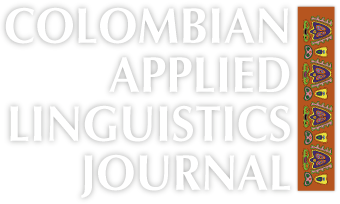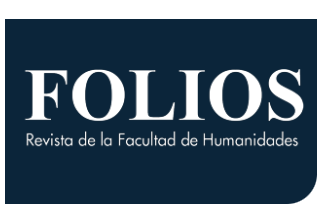Intercultural Components in the Multimodal Structure of a Language Learning Website
Componentes interculturales en la estructura multimodal de un sitio web para el aprendizaje de lenguas
DOI:
https://doi.org/10.15446/profile.v21n1.69951Keywords:
Intercultural communicative competence, language learning websites, multimodal social semiotics (en)competencia comunicativa intercultural, semiótica social multimodal, sitios web para el aprendizaje de lenguas (es)
Recibido: 22 de enero de 2018; Aceptado: 24 de septiembre de 2018
Abstract
The emergence of language learning websites has generated changes in intercultural communicative practices. Particularly, these sites use a wide variety of modes of communication (visual, linguistic, spatial) which allow the presence of intercultural elements. This interpretative case study analyzes the semiotic structure of one lesson of the language learning website Livemocha in order to unveil the presence of intercultural elements in it. Data were analyzed following a method for multimodal analysis and Byram’s model of intercultural communicative competence. Findings suggest the essentialist view of culture on Livemocha, based on festivals and food, and the potential promotion of some of Byram’s intercultural skills.
Key words:
Intercultural communicative competence, language learning websites, multimodal social semiotics.Resumen
La emergencia de sitios en línea para el aprendizaje de lenguas ha generado cambios en las prácticas comunicativas interculturales. Particularmente, estos sitios usan una amplia variedad de modos de comunicación (visual, lingüístico, espacial) que permiten la presencia de elementos interculturales. En este estudio de caso interpretativo se analiza la estructura semiótica de una unidad del sitio en línea para el aprendizaje de lenguas Livemocha con el fin de descubrir la presencia de elementos interculturales en él. La información se analizó siguiendo el método de Álvarez para el análisis multimodal y el modelo de competencia comunicativa intercultural de Byram. Los resultados sugieren la visión esencialista de Livemocha, basada en festivales y comida, y la potencial promoción de habilidades interculturales de Byram.
Palabras clave:
competencia comunicativa intercultural, semiótica social multimodal, sitios web para el aprendizaje de lenguas.Introduction
During the last decades, communicational practices have experienced a decisive revolution in terms of media of communication, spaces, and affordances. Part of this transformation has been manifested in what some authors call “the visual turn” (Álvarez, 2016c; Kress, 1997). This turn has led to the preeminence of images in a wide variety of interactional landscapes. According to some authors (Jewitt, 2009; van Leeuwen, 2005), the use of images has overthrown the supremacy of text. Evidence of this is the amount of paralinguistic elements in the design of web pages (Michelson & Álvarez, 2016), and text books (Bateman, 2008) in today’s communicative environments (Álvarez, 2016a; Kress, 2010). Particularly, one of the manifestations of the visual turn can be found in the web page design of social networking sites (SNSs) such as Facebook, YouTube, and Twitter, among others (Álvarez, 2014; Michelson & Álvarez, 2016). These sites, using Web 2.0 technology, include a wide range of modes of communication allowing users to interact beyond linguistic means and using multimodal affordances (Álvarez, 2016b, 2016d; Brick, 2011). Visual communication has also had an echo in educational contexts, especially in the creation of online applications for language learning. This is the case of social networking sites for language learning (SNSLL). SNSLL have adopted the Web 2.0 technology and the interactional patterns of SNSs in order to offer spaces for language learning and worldwide interaction (Brick, 2011; Harrison & Thomas, 2009). Interestingly, SNSLL provide alternatives to establish intercultural communication and the acquisition of cultural knowledge, not only through their social interface, but also through their semiotic design.
Literature Review
Previous studies have addressed the affordances of SNSLL in higher education contexts. For instance, Brick (2011) researched the ease of use and access to the SNSLL Livemocha, its positive and negative aspects, and the participants’ attitudes, perceptions, and behaviors towards this SNSLL. Brick discovered that some advantages of Livemocha were the opportunities to practice oral skills with other learners and to get immediate feedback. Nevertheless, Livemocha’s learning approach was lexical and some users were victims of cyber-flirting.
Similarly, Álvarez analyzed the views of language (2016b) and learning (2016d) present in the semiotic design of the SNSLL Busuu, examining the positioning and creation of identity (2016a) from the dynamic of participation in this website. The findings indicate that Busuu is an ecological, linguistic, and social system composed of several subsystems and multimodal elements. Each subsystem has a particular view of language learning where users work and develop their conceptions and skills from these views. Consequently, Busuu’s semiotic spaces evoke structural, interactional, and ecological views of language that work together to echo behaviorist, cognitivist, and constructivist theories of language learning. Hence, the construction of identity in this site is developed from the activities, multimodal elements, learning dynamics, and syllabus. Busuu encourages users to become active learners and to expand their linguistic repertoire through a system of rewards and communitarian online support.
Likewise, Michelson and Álvarez (2016), through a multimodal-semiotic analysis, examined the underlying meanings that the site of Arcadia University (USA) assigned to the experience of studying abroad. The findings of this research showed that there is a prevailing touristic vision of studying abroad. Discourses of tourism are achieved through the combination of diverse modes of communication, particularly the visual mode (photographs and spatial layout) and written language. The website appeals to the students’ desire, pleasure, and recreation to convince them to enroll in study abroad programs. Therefore, the users of this program look for touristic “adventures” due to the experiences of other students and not an opportunity for academic development. Discourses of academic tourism are highlighted in the students’ section of the website where the learners who took part in this program narrated their academic experiences abroad as recreational activities. Consequently, this site implicitly supports discourses of capitalism, consumerism, and market. The implicit message underlying these sites reflects the conception of education that business representatives and students have about international education. Although Michelson and Álvarez’s research did not focus on SNSLL, their study is useful for the present article because it explores the affordances of multimodal analysis in a website.
Despite these outstanding studies in the field of education and multimodality, SNSLL and intercultural competence still require research. With this epistemological gap in mind, the present study focuses on the multimodal nature and the presence of intercultural components in the semiotic design of the SNSLL Livemocha. Hence, this study adopted an intercultural view of language learning, basically, Byram’s (1997) intercultural communicative competence (ICC) model. Furthermore, I followed the tenets of multimodality proposed by Kress (1997). These two views were articulated with considerations about the nature of SNSLL and their usage in higher educational contexts (Álvarez, 2016a, 2016d; Clark & Gruba, 2010; Zourou, 2012). These theoretical axes are addressed below.
Intercultural Communicative Competence
Following a vision of language learning as the development of linguistic, social, cultural, and critical skills, Byram (1997) proposed his ICC model as an alternative to enhance the process of language learning beyond the traditional linguistic/communicative abilities. Byram mentions four competences involved in language learning: linguistic, pragmatic, sociolinguistic, and intercultural. Here, I explain Byram’s view of ICC which is composed of five dimensions: attitudes, knowledge, skills of interpreting and relating, skills of discovery and interaction, and critical cultural awareness.
The dimension of attitudes of openness and curiosity refers to the learners’ eagerness to decenter from their own cultural perspective and learn from others in a dialogue of equality and friendship. Likewise, knowledge is defined as the set of information about the cultural products, practices, and interactive procedures of other cultures. The skills of interpreting/relating allow learners to decipher and associate documents and events from other cultures and to understand their significance in relation to the learners’ own cultural system. Hence, the skills of discovery/interaction refer to the ability of operating attitudes, knowledge, and skills of relating and interpreting in real-time communication in order to discover new cultural elements. Finally, Byram (1997) describes the skill of critical cultural awareness as the learners’ “ability to evaluate, critically and on the basis of explicit criteria, perspectives, practices and products in one’s own and other cultures and countries” (p. 63). These skills aim at developing intercultural speakers capable of interacting and maintaining successful relationships with speakers of other cultures as well as keeping aware of the importance of freedom, democracy, and cooperation. However, the way cultural products and symbols operate might be better understood from a multimodal perspective of interactions.
A Multimodal View of Communication
Understanding the ICC dimensions gives us hints about how intercultural communication happens (Byram, 1997). Nonetheless, the role of symbols and socially created signs needs to be addressed in order to comprehend the semiotic dimension of communication. As Kress (2010) explains, communication is a process that involves paralinguistic elements in the creation of messages. Therefore, a wider view of communication should acknowledge the existence, transformation, and use of all types of socially constructed signs of communication. This is precisely the focus of multimodality. In this sense, multimodality is the study of the creation, evolution, and nature of the different social signs used in communication (Jewitt, 2005; Kress, 2012; van Leeuwen, 2005). The particularity of this approach is the acknowledgement and focus on a wide variety of communicative modes going beyond a purely linguistic view of language. In order to understand this perspective of communication, we need to know the main concepts related to multimodality. These concepts are:
Semiotic resources: In van Leeuwen’s (2005) words: “the actions, materials and artifacts we use for communicative purposes” (p. 16). In other words, everything used to communicate and create meaning or the base units of a multimodal document.
Modes of communication: The semiotic resources are organized and materialized in modes of communication. These modes are grouped according to their communication origin. The New London Group (1996) lists five modes of communication: linguistic, audio, spatial, gestural, and visual.
Intersemiotic relationship: The relationship of meaning construction and connections among semiotic resources, modes of communication, and their underlying meanings in a multimodal ensemble (Kress, 2010).
Being aware of the semiotic and multimodal relationships within a multimodal ensemble will allow us to discover hidden messages and meaning relationships among different multimodal elements present in diverse documents. In this case, the target document was a lesson from a website for language learning.
Method
This study was part of a macro project carried out in two Colombian universities, Universidad del Valle (Cali) and Universidad Javeriana (Bogota), which aimed at inquiring about the affordances of SNSLL in higher education programs. This research follows principles of a qualitative descriptive and interpretive study (Merriam, 2009) by drawing on a multimodal analysis of the semiotic structure of the SNSLL Livemocha. Although the only data source was Livemocha, this research has the features of a case study: particularistic, descriptive, and heuristic (Merriam, 2009; Stake, 2005). It is particularistic because, among the numerous SNSLL, I chose Livemocha (the particular case) as a sample of these websites; descriptive, because it characterizes deeply the conditions and nature of Livemocha; and heuristic, or interpretive, because it unveils the creation of cultural meanings emerging from the relationship of multimodal elements. Due to space restrictions, I focused on one language lesson of Livemocha.
Data Analysis
To explore Livemocha from a multimodal perspective, I adopted elements from the social semiotic approach. I followed Álvarez’s (2016c) analytic model to examine multimodal texts. His proposal consists of four steps: examination of conditions of production and use, identification of base units, description of modes and their functions, and analysis of intersemiotic relationships (Figure 1). These steps are not linear and might be applied to different kinds of texts. I used Álvarez’s proposal because of its focus on multimodal elements and its applicability to websites such as Livemocha.
Figure 1: Steps of Multimodal Analysis (Álvarez, 2016c, p. 102)
Steps of Álvarez’s Analysis
-
Conditions of production and use of text: Explanation of the social, cultural, historical, and material conditions under which a multimodal text is produced and disseminated.
-
Identification of base units: Recognition and description of the base units of the multimodal ensemble.
-
Analysis of modes and functions: Categorization of the base units, in terms of modes of communication, and analysis of their functions.
-
Intersemiotic relationships: Analysis of the relationships among the base units and modes of communication of a semiotic design and interpretation of the underlying messages of the multimodal structure.
Although Álvarez (2016c) divides stages two and three in two steps, here (due to lack of space) I combined them into one step. After identifying and analyzing the multimodal elements on lesson W9, I used a matrix with Byram’s ICC components in which I classified the base units in terms of ICC dimensions aiming to discover the intercultural relationships in this lesson. I discovered the semiotic coherence of the multimodal elements in the lesson and observed items that indicated how the (inter)cultural dimension was manifested in the semiotic design of Livemocha.
Findings and Discussion
Following Álvarez’s (2016c) method for multimodal analysis, I studied the semiotic structure of lesson W9: “Holiday Celebration with Friends” to explore the intercultural elements in it. This section has three parts: (a) analysis of conditions of production and use; (b) identification of base units, modes of communication, and their functions; and (c) intersemiotic relationships.
Conditions of Production and Use
Livemocha was a language learning website in a format of social networking site. Founded in 2007, Livemocha aimed to improve the experience of online language learning (Clark & Gruba, 2010). This was the first site of its kind and incorporated several language courses, activities, and a virtual community of users who supported each other’s learning process (Brick, 2011). Livemocha’s courses were divided into levels and lessons. The lessons had several activities and multimedia material to work on the four communicative skills. Livemocha managed the concept of freemium, which means that some contents were free to the public and other functions had a fee (Froberg, 2014). Livemocha highlighted the opportunity of contacting native speakers and getting online support. The website was closed in 2016 and currently is part of the community Hellolingo. With 35 language courses, Livemocha reached 16 million users until 2016 (Brick, 2011; Clark & Gruba, 2010; Livemocha Inc., 2016).
Livemocha had three main spaces: language lessons (levels and learning material online), help others (a space for grading and offering advice to other learners), and language learners (a section to meet users). Language lessons had eight sections: introduction, vocabulary, usage, practice, and four sections of communicative tasks.
Furthermore, Livemocha corresponds to a sociocultural context characterized by a push for English as a global force, the integration of new technologies in language teaching and new ways of socialization materialized by online environments. In fact, Livemocha’s pedagogical orientation, content, and design portrayed a Western view of language teaching (Álvarez, 2014). For example, Livemocha’s general information appeared in English and its syllabus for other languages was an adaptation of the morphosyntactic components of the English language. Also, on Livemocha some learning materials were just “translated” from English without previous pedagogical consideration (Clark & Gruba, 2010). This choice of material shows the dominant role of English and the logic of learning/teaching in SNSLL.
Livemocha also reflects a global trend towards the development of online education. Language teaching has been impacted by virtual education and the use of new technologies, especially Web 2.0 (Álvarez, 2014; Conole & Alevizou, 2010). Some of the new possibilities are the secularization of education, autonomous learning, and virtual learning communities (Álvarez, 2016a; Pavlenko & Norton, 2007). Web 2.0 affordances offer virtual environments that enhance dialogue among people from different cultures (Chotel, 2012; Potolia & Zourou, 2013), and the emergence of telecollaboration and tandem learning among users of different languages (Livingstone, 2008; Thorne, 2010).
In Livemocha, the interconnectivity and its learning environments changed the ways of socialization. Livemocha addressed the concerns of communication and socialization in nontraditional spaces. By adopting the semiotic structure of SNSs like Facebook, Livemocha adapted to the dynamics of the social web to provide users diversified forms of socialization and identity construction. Particularly, Livemocha stressed its social nature in its online design, interactive tools, and learning spaces. Livemocha was also successful in creating a sense of belonging among its members and thus in attracting more people. The statistics and length of operational time prove its success (Brick, 2011; Chotel, 2012; Clark & Gruba, 2010). Consequently, Livemocha members constituted an imagined community. On SNSLL, learners from different origins establish a connection based on learning experiences and mutual support, develop alliances, and become part of an imagined community of transnational language learning (Álvarez, 2016d). Engagement in imagined communities leads to investment in the target language, role negotiation, and transformation of the users’ imagined identity (Norton & McKinney, 2011).
Although Livemocha’s social media gave way to intercultural exchange, this exchange does not imply the development of intercultural competencies. Developing ICC skills requires a process of decentering and reflection that is not achieved just with communicational exchanges (Byram, 2008; Liddicoat & Scarino, 2013). Therefore, we need to understand how the relationship of contents and functions permitted learners to display intercultural skills. In the following section, I analyze the relationship between the semiotic design of Livemocha and its intercultural dimension.
Identification of Base Units and Modes of Communication and Their Functions
After analyzing the conditions of production and use of multimodal documents, researchers must identify, classify, and find the functions of the base units in the multimodal ensemble (Álvarez, 2016c). Here, I identify the base units and semiotic clusters composing two pictures of the introductory video in lesson W9. I present the analysis of these pictures to illustrate the process. In Figure 2, we observe the semiotic structure of Livemocha’s language units, which are composed of four semiotic clusters that group the base units of each section.
Figure 2: Semiotic Clusters and Modes of Communication on Livemocha
Semiotic clusters are sets of multimodal elements grouped harmoniously within a multimodal ensemble (Álvarez, 2014). In Figure 2, the semiotic clusters divide the space of each lesson and facilitate the navigation of users. For example, cluster one provides general information about the user, the lesson and the available rewards, and offers access to the main menu. Semiotic cluster two locates users in the language lesson and gives them the option to navigate within the lesson sections. Each section is represented by an icon. Semiotic cluster three presents the learning material with which to study the lessons and develop the exercises. Finally, semiotic cluster four offers interactive options for users to advance in, continue, or leave the current activity. All the semiotic clusters are divided by a different background color behind the visual and linguistic elements on the screen. This distribution of base units and semiotic clusters constitutes the semiotic structure of Livemocha’s lessons. Notably, the white spaces and the background color show the divisions among semiotic clusters. The next step is to identify the base units composing the interface of the first section of lesson W9 (Figure 3).
Figure 3: Base Units of Livemocha’s Interface: Section 1. Introduction
In Figure 3, there are 24 base units composing the semiotic structure of this screenshot. The introduction section consists of a video featuring a slideshow with voice over. The main modes of communication used are visual (icons, pictures, colors, symbols), linguistic (text and oral discourse in the presentation of the video) and spatial (the distribution that organizes the semiotic clusters). Table 1 shows the functions of base units and their modes in Figure 3.
Table 1: Base Units and Modes in Figure 3

The base units’ functions in Figure 3 appear organized in modes of communication. For instance, the visual base units (a, d, e, etc.) support the navigation, allow the interaction within the lesson, present the learning material, and enhance online support. The linguistic base units (b, c, p, etc.) show the general information of the lesson, the sections within it, the language material and interactive options regarding the language material. The spatial base units (f, v, x, o) distribute the elements and show the divisions among semiotic clusters by indicating the different functions of each space.
Interestingly, some base units fit within two different modes of communication (o, w, r) and accomplished more than one function in the first picture of the introductory video of lesson W9. Especially, the base unit r, which represents the introduction video itself, contained visual and linguistic elements that portrayed intercultural elements. These cultural elements emerging from the relationship among different multimodal elements are discussed in the following paragraphs.
Intersemiotic Relationships
In this step, I analyze how the relationship among semiotic elements in some sections (introduction, vocabulary, and read/speak) of lesson W9 illustrate the idea of interculturality on Livemocha.
Section of introduction. The section of introduction in lesson W9 was a slideshow with a woman (Nia) telling an anecdote about how she celebrated Christmas with some friends of different cultures. Two elements might suggest the presence of intercultural elements in the video: the pictures and the narration of the slideshow. In Figure 3, we observe eight youngsters who appear to be from different countries (according to their clothes and physical appearance) sharing a special occasion in what seems to be a temple in the background. In this picture, gesture and gaze are used as part of the semiotic composition. Both elements might communicate covert intercultural messages of openness.
The youngsters in Figure 3 are smiling while hugging each other. This gesture has the potential to invite users to establish relationships of social affinity and acceptance through the inclusion of people from different nationalities (Kress & van Leeuwen, 1996). Additionally, when we observe people from different cultures smiling and hugging in a friendly manner, one can interpret a suggestion to accept others.
Furthermore, the characters in Figure 3 look directly to users on the other side of the screen. In semiotic terms, this means that something is demanded from the viewer (Michelson & Álvarez, 2016). By posing this way the actors are, to some extent, asking users to share their joy and are implicitly transmitting the idea of valuing others regardless their cultural differences identified by clothing, race, or nationality. The smiles of the actors support this idea of acceptance. Through this semiotic composition (gaze and gesture) Livemocha tried to transmit covert intercultural content and potentially promoted attitudes of acceptance of other cultures.
However, the representation of culture on Livemocha was reduced to a set of traditions, physical appearance, and clothing, elements related to stereotypes and a view of culture focused on factual knowledge. From that perspective, culture is considered a static entity based on race and nationality. This misrepresentation of interculturality does not encourage learners to go beyond stereotypes or engage in processes of democracy and freedom as Byram (1997) clearly proposes. In fact, in Figure 3, interculturality is reduced to a superficial level (having friends of other countries and sharing celebrations). The website does not tell anything about minorities, social issues, intercultural dialogue, or intercultural misunderstanding, elements that need to be analyzed in order to comprehend the intricacies of intercultural communication (Ware & Kramsch, 2005).
Also, the title of the lesson “Holiday Celebration with Friends” insinuates the superficial construction of interculturality. When combined with the images of the slideshow, the title might suggest positive attitudes and curiosity towards people from other cultures. Nevertheless, the representation of culture on Livemocha falls short in going beyond cultural information and the exotic dimension of the other (Byram, 1997). In fact, the slideshow, presented ten pictures related to cultural elements of different celebrations (some of them in Table 2). Among them, I analyzed the first picture shown in the introductory video (Figure 3) in order to unveil the representation of interculturality in the lesson.
This was a big handicap on Livemocha because, from an intercultural view of language teaching, accepting others and analyzing several perspectives about cultural themes are fundamental to acquire intercultural communicative skills and to engage in a dialogue with the other in everyday relationships (Byram, 2006; Liddicoat, 2008; Liddicoat & Scarino, 2013). Moreover, the narration accompanying the slideshow presents the overall view of interculturality on Livemocha. In this narration, Nia (the narrator) tells how her friends explored some cultural elements of each other’s cultures and shared their different holiday rituals without difficulties in spite of their cultural differences. Below, I present the transcription of the narration.
Holiday celebration with friends.
This year my friends and I decided to celebrate the holidays together since we were out of school for three weeks. My mom said that we could celebrate it at our house. When everyone arrived, my mom and sister had on red caftans. They looked so pretty. That night, we had a big feast and opened gifts. My mom and aunts made turkey, dressing, rolls, green beans, and much more. My grandmother made her famous fruitcake. Everyone loved it. After we ate, we opened gifts like we normally would on Christmas.
Since Hannukah started before we left school, we honored my friend Chris by giving him blue and white gifts since those are Hannukah colors. Hannukah does not always fall on the same day like Christmas and Kwanzaa.
The next day was the first day of Kwanzaa. So, we gathered around the table while my aunt [lit] the first candle on the Kanara. The first day of Kwanzaa is called Umoya which stands for unity. We all went out to serve food to the homeless that day to represent unity. My name is Nia which comes from the fifth day meaning purpose. All of my friends tell me it’s my purpose to serve them on that day. They are funny. We really enjoy the holidays together. When we get back to school, we will have a big Chinese New Year parade. I love how we can all embrace our different cultures and share our celebrations with each other. This was a wonderful holiday.
The narration includes three elements suggesting the presence of intercultural elements: the appearance of different cultures, the description of their holiday traditions, and the reiteration of positive actions aimed at joining people in peaceful celebrations. Although most of these elements could fit within the dimensions of attitudes and knowledge in Byram’s model, the representation of culture and intercultural interaction is superficial. As he indicates, intercultural speakers must go beyond positive attitudes towards the others and must be ready to understand the intricacies of communication by using specific knowledge about the cultural symbols, products, and socialization processes of the interlocutor’s and one’s own cultures (Byram, 1997; Byram, Gribkova, & Starkey, 2002). Nonetheless, in the narration, knowledge about others is seen only as a set of cultural facts and acceptance is reduced to sharing a celebration with foreigners. There is no evidence of understanding, changing the points of view, or accepting the otherness. What the text shows is an attempt to approach other cultures by using lists of rituals, foods, and celebrations and showing a positive attitude towards people from other nationalities.
For example, Nia mentioned three cultures: African American, Jewish, and Chinese. The first two cultures were widely discussed; the third one was mentioned briefly. The story focuses on Nia’s holiday with her friends and her reflections about being part of a diverse cultural community. The description of different celebrations begins with Nia’s familiar traditions. Regarding the African American culture, Nia presents the traditional African clothing (my mom and sister had on red caftans), holiday activities (we ate, we opened gifts like we normally would on Christmas) and food (turkey, green beans, fruitcake) that are also common in American culture. Nia also mentions Christmas activities as part of her own culture that are similar to the American tradition. Due to the proximity of both celebrations (Christmas Day is celebrated on December 25th and Kwanzaa begins on December 26th), the narrator talks about cultural behaviors and customs of her African and American origins. This mention indicates how her African heritage influences the American culture and how the coexistence of both systems in her family might lead to the strengthening of affective links.
Part of the cultural illustration in this section is about some elements of African celebrations. These elements were the description of Kwanzaa, the activities to start Kwanzaa (we gathered around the table while my aunt [lit] the first candle on the Kanara), the meaning of the first Kwanzaa day (Umoya: unity) an important action reflecting the spirit of Kwanzaa (We all went out to serve food to the homeless that day to represent unity) and the meaning of the narrator’s name (purpose). Despite the promotion of peaceful coexistence through these cultural facts, the representation of holiday celebrations is based on stereotypes, foods, and festivals. This is a monolithic conception of culture. In this example, culture is seen as a static set of habits, clothing, and food which puts aside the immaterial and evolving essence of cultures. There is no evidence of intercultural understanding of how stereotypes might hinder intercultural communication, the role of nonverbal communication, and the management of sensible topics in intercultural exchanges.
Actually, Nia talks about Hannukah as an important celebration, mentions the colors of this festivity (blue/white), and the days when it is celebrated. She also said that Chris (her Jewish friend) was honored by receiving gifts of blue/white colors. However, the idea of intercultural coexistence is materialized and reduced to a trivial participation (giving a present and sharing a festivity) and a limited set of traditions of other groups. This shows that Livemocha considers the intercultural dimension under the lens of folklore, food, clothing, and festivals.
Although, Livemocha tried to include other cultural perspectives and promote the acceptance of cultural differences (As Nia declares: “I love how we can all embrace our different cultures and share our celebrations with each other. This was a wonderful holiday.”), the emphasis on interculturality is exclusively superficial and relies on the construction of cultural differences and tradition excluding the exchange of cultural patterns of behavior.
Section of vocabulary. In the section of vocabulary, the cultural presence appeared in the lexical elements shown and the ICC skills were inferred from their semiotic design (Table 2). Livemocha presented cultural knowledge on the flashcards and examples. The cultural items displayed were divided into five categories: Festivities (Kwanzaa, Ramadan, Chinese New Year, Christmas, and Hanukkah), clothing (caftan), cultural objects and symbols (kinara, dreidel, menorah, Santa Claus, Christmas tree), food (potato latke, fruitcake) and actions (to pray). There were also two words without a picture (discipline, to display), however one of them (to display) had an example related to a cultural element: “the presents were displayed under the Christmas tree.”
Table 2: Lexical Elements in the Vocabulary Section

Most elements of the vocabulary section (Table 2) suggest the promotion of declarative knowledge about other cultures through images and text (visual and linguistic modes of communication). In some cases, the elements of other cultures were represented as something positive and interesting (Figure 3), but again Livemocha exhibits a conception of culture based on cultural facts. The four categories of lexical items evidence how Livemocha’s idea of culture remains a static group of habits, customs, and materials, a totally discussed view of culture from an intercultural perspective of language learning (Byram, 1997; Liddicoat, 2008).
Read-speak section. In this section, learners read a prompt that was accompanied by an image. They recorded a message answering the questions provided in the prompt (Figure 4). From a multimodal perspective, the section of read-speak highlighted the linguistic and visual modes of communication. The linguistic mode included the instructions to develop the activity and the command buttons below the picture. These base units-that were composed by size, color, location, and font type-guided learners in their communicative tasks and helped them to navigate within the lesson.
Figure 4: Exercise in Read-Speak Section
Although the activity could invite users to interpret and relate events from other cultures to their own reality, what Livemocha exhibits is a task aimed to describe (Describe what the people are doing at this celebration) and propose an action (What would you be doing if you had an invitation there) based on the cultural pattern presented. Since the focus is descriptive and the interpretive potential of this task is reduced to an activity of observation, what users really did was to give an account of a stereotypical situation of the target culture and assimilate foreign behavior. Unfortunately, the task lacks the sense of plurality and relies only on one single perspective to consider the social event presented. This view is far from what Byram (1997) proposes and only promotes a narrow understanding of interculturality.
Concerning the visual mode of communication in this activity, the picture provides context and illustrates the task. This picture uses affordances of color, size, distribution, and cultural elements. From an intercultural view, the picture gives a sense of semiotic cohesion because it is part of the main theme of the lesson and presents the topic of cultural celebrations. The situation presented is a group of people at a restaurant enjoying a formal dinner.
Nonetheless, the picture is a stereotypical representation of English-speaking peoples which does not offer details about the interactions, behaviors, and social meanings that might occur in this event. In Figure 4, there are some superficial and essential cultural traits reflected in the participants (people with Western physical features), their clothing (formal), and the landscape of the picture reflecting a panoramic view of a city at night with skyscrapers as part of the background. Showing this image to learners as a representation of the target culture implies that Livemocha conceives interculturality from a superficial focus whose aim is communication at a simplistic level leaving aside critical cultural issues, multiple perspectives about social events, and the transformation of society.
In fact, the information about cultural behavior in Figure 4 is poor. Users could not see exactly how communicational exchanges happen, neither the manners, gestures, or protocols of cultural behavior in the communicative situation. The picture solely shows a clean place, no sign of disorder or dirt in the place or the attendants, and people who seem to behave as expected in a formal dinner.
Moreover, Figure 4 shows a dinner on a ship, which is another of the particularities of the way Livemocha portrayed culture. This activity is not common in the West, but the picture shows a stereotypical image of English-language speakers as white, wealthy people. Although Livemocha just tries to communicate typical images of the target culture, a teacher could use these images to explore some stereotypes and address critical themes. This could also help aware and informed users to identify possible intercultural relations. However, the content and promotion of intercultural skills are limited and, to some extent, incidental due to the tendency towards communication. Perhaps, intercultural skills might be promoted by using support from outside the site to complement the tasks, but it would require the teacher’s critical view of Livemocha’s cultural representation, for example, the comparison of popular culture and high culture in social events.
The main topic of unit W9 was cultural celebrations. In Byram’s (1997) terms, the sections analyzed insinuated the incidental presence of skills of attitudes and factual knowledge. Despite Livemocha’s attempts to include cultural elements and skills in its lessons, the center of the learning material was exclusively communicative and the intercultural dimension played a secondary role. As seen in the data, expressions of other cultures were added to the design from an essentialized and static view of culture based on folklore, food, and festivals. The idea of accepting others did not go beyond knowing about celebrations and sharing food. Additionally, the lexical elements accompanying this unit showed a tendency towards superficial cultural knowledge; and where critical issues could have been discussed, the site only showed a stereotypical image of the target culture with a focus on description and reproduction of foreign activities.
The idea of culture on Livemocha was forged through the use of semiotic resources such as pictures, written text, and audio narration, which together establish intersemiotic relationships because they all articulate to construct meaning. The modes that permitted this construction of meaning were visual, spatial, and linguistic. Although in this small analysis we saw that Livemocha transmitted a superficial nation-based idea of culture, there were some traces of attitudes of openness and factual knowledge in the design of this website. That was not the case with other ICC dimensions that were less salient. In this sense, Livemocha failed in portraying a wider view of intercultural communication. Some components of the ICC model such as skills of interpreting/relating and discovery/interaction and critical cultural awareness were not explicit in Livemocha’s semiotic design. Furthermore, the skill of critical cultural awareness was the less salient on Livemocha. Due to Livemocha’s focus on interactive aspects of language, the critical dimension of communication was not directly addressed in the learning material. Álvarez (2014), Brick (2011), and Chotel (2012) explain that SNSLL have a strong tendency towards the communicative elements of language learning, mainly lexical and grammatical aspects, leaving aside critical elements that take part in communication. However, the site could promote these dimensions through its chat interface and the incorporation of some Livemocha units in a syllabus based on an intercultural perspective of language learning.
In sum, under Byram’s ICC model, the representation of the intercultural dimension on Livemocha was reduced to factual knowledge and superficial interaction based on celebrations and traditions. Although the production tasks had the potential to promote discussions about critical issues and the adoption of several perspectives about cultural events, the communicative focus was more salient on Livemocha. These particularities played an important role in the semiotic design of a unit of Livemocha and characterized the learning activities and material used by learners. Despite the absence of a clear intercultural proposal on Livemocha, this study invites teachers to reflect on the potential of SNSLL as powerful tools to integrate culture in language learning and to analyze critically the cultural dimension on these websites.
Conclusions
The relevance of digital communication and the establishment of virtual communities are important features of the 21st Century society. Moreover, the positioning of English as a global transactional language has led to the development of online platforms that offer alternatives to English language learning. SNSLL are one of these alternatives that promote web-based education and free communicational exchange. Particularly, this study explored the link between Livemocha and the presence of dimensions of Byram’s ICC model. Through a novel method to analyze multimodal documents, I discovered that Livemocha’s semiotic design seemed to promote intercultural elements of Byram’s model such as attitudes, knowledge, and skills of interpreting/relating.
Basically, Livemocha’s semiotic design relies on three main modes of communication: visual, linguistic, and spatial, embodying the work of semiotic resources such as pictures, icons, color, oral and written texts, and spatial distribution. These modes of communication interacted among themselves generating an intersemiotic relationship of coherence within the lesson in terms of thematic cohesion.
Especially, the relationship of pictures with the title of the lesson and the narration of the introductory video of lesson W9, showed that Livemocha understood culture as a set of facts that learners can list and learn by heart without critical analysis or without taking on multiple perspectives about social issues. The photo, showing young people from different cultures hugging and smiling, reflects the type of attitudes that characterize SNSLL and place interaction at the center of language learning. Also, the narration and the vocabulary section, full of cultural references, tried to promote attitudes of acceptance and knowledge about others, but they were framed in a stereotypical conception of nationality and ethnicity and showed only isolated items of cultural traditions from a superficial perspective of culture. Additionally, the blurry presence of cultural behavior, lack of analysis of events, and positioning towards particular situations in the section of read-speak, seemed to leave aside the skills of interpreting/relating in learners. In fact, Livemocha did not show explicitly all the ICC components and focused on the communicative dimension of language learning thus ignoring critical issues.
This study also informs about implication for further research and pedagogical practice. Further research should address more analyses on SNSLL and explore their semiotic structure in order to understand the intercultural dimensions and examine the presence of critical elements that could boost the development of critical and interactive intercultural skills. This analysis also showed that SNSLL still require research that must be developed to unveil their affordances in language education and the role of teachers in the creation and adaptation of digital material to promote ICC in language learning.
Regarding the implications for pedagogical practice, the potential of these environments to promote intercultural skills could be further enhanced with a more active presence of teachers in enriching and adapting the contents of the website. Designers of SNSLL should be aware of how the contents they present construct ideas about other cultures which could lead to construct stereotyped views or more constructivist and pluralistic conceptions of members of foreign cultures.
Acknowledgements
I would like to thank professors José Aldemar Álvarez and Orlando Cháves, and my life partner Ángela Cordero for their support and help during the revision of this article. All the glory to my God and Savior Jesus Christ.
References
About the Author
References
Álvarez, J. A. (2014). Language, learning, and identity in social networking sites for language learning: The case of Busuu (Unpublished doctoral dissertation). University of Arizona, Tucson, USA.
Álvarez, J. A. (2016a). Framing learners’ identity through semiotic designs on social networking sites for language learning. In J. A. Álvarez, C. Amanti, S. Keyl, & E. Mackinney (Eds.), Critical views on teaching and learning English around the globe (pp. 17-35). Charlotte, US: Information Age.
Álvarez, J. A. (2016b). Language views on social networking sites for language learning: the case of Busuu. Computer Assisted Language Learning, 29(5), 853-867. https://doi.org/10.1080/09588221.2015.1069361.
Álvarez, J. A. (2016c). Meaning making and communication in the multimodal age: Ideas for language teachers. Colombian Applied Linguistics Journal, 18(1), 98-115. https://doi.org/10.14483/calj.v18n1.8403.
Álvarez, J. A. (2016d). Social networking sites for language learning: Examining learning theories in nested semiotic spaces. Signo y Pensamiento, 35(68), 66-84. https://doi.org/10.11144/Javeriana.syp35-68.snsl.
Bateman, J. A. (2008). Multimodality and genre: A foundation for the systematic analysis of multimodal documents. New York, US: Palgrave MacMillan. https://doi.org/10.1057/9780230582323.
Brick, B. (2011). Social networking sites and language learning. International Journal of Virtual and Personal Learning Environments, 2(3), 18-31. https://doi.org/10.4018/jvple.2011070102.
Byram, M. (1997). Teaching and assessing intercultural communicative competence. Clevedon, UK: Multilingual Matters.
Byram, M. (2006). Developing a concept of intercultural citizenship. In G. Alred, M. Byram, & M. Fleming (Eds.), Education for intercultural citizenship (pp. 109-129). Buffalo, US: Multilingual Matters.
Byram, M. (2008). From foreign language education to education for intercultural citizenship. Bristol, UK: Multilingual Matters. https://doi.org/10.21832/9781847690807.
Byram, M., Gribkova, B., & Starkey, H. (2002). Developing the intercultural dimension in language teaching: A practical introduction for teachers. Strasbourg, FR: Council of Europe.
Chotel, L. (2012). Interactivite et interactions sur un site d’apprentissage et de réseautage en langues: analyse systémique de l’activité de trois apprenants (Unpublished doctoral dissertation). Université Stendhal-Grenoble 3, Paris, France.
Clark, C., & Gruba, P. (2010). The use of social networking sites for foreign language learning: An autoethographic study of Livemocha. In C. H. Steel, M. J. Keppell, P. Gerbic & S. Housego, (Eds.), Curriculum, technology and transformation for an unknown future (pp. 164-173). Sydney, AU: Ascilite2010.
Conole, G., & Alevizou, P. (2010). A literature review of the use of web 2.0 tools in higher education. York, UK: HEA Academy.
Froberg, P. (2014). What is freemium? Retrieved from https://www.slideshare.net/froberg/meet-freemium-presentation.
Harrison, R., & Thomas, M. (2009). Identity in online communities: Social networking sites and language learning. International Journal of Emerging Technologies and Society, 7(2), 109-124.
Jewitt, C. (2005). Multimodality, “reading”, and “writing” for the 21st Century. Discourse: studies in the cultural politics of education, 26(3), 315-331. https://doi.org/10.1080/01596300500200011.
Jewitt, C. (2009). An introduction to multimodality. In C. Jewitt (Ed.), The Routledge handbook of multimodal analysis (pp. 14-27). Abingdon, UK: Routledge.
Kress, G. (1997). Visual and verbal modes of representation in electronically mediated communication: The potentials of new forms of texts. In I. Snyder (Ed.), Page to screen: Taking literacy into the electronic era (pp. 53-79). London, UK: Routledge.
Kress, G. (2010). Multimodality: A social semiotic approach to contemporary communication. London, UK: Routledge.
Kress, G. (2012). Thinking about the notion of ‘cross-cultural’ from a social semiotic perspective. Language and Intercultural Communication, 12(4), 369-385. https://doi.org/10.1080/14708477.2012.722102.
Kress, G., & van Leeuwen, T. (1996). Reading images: The grammar of visual design. London, UK: Routledge.
Liddicoat, A. J. (2008). Pedagogical practice for integrating the intercultural in language teaching and learning. Japanese Studies, 28(3), 277–290. https://doi.org/10.1080/10371390802446844.
Liddicoat, A. J., & Scarino, A. (2013). Intercultural language teaching and learning. Malden, US: Wiley Blackwell. https://doi.org/10.1002/9781118482070.
Livemocha Inc. (2016). Language learning community (link currently unavailable).
Livingstone, S. (2008). Internet literacy: Young people’s negotiation of new online opportunities. In T. McPherson (Ed.), Digital youth, innovation, and the unexpected (pp. 101-122). Cambridge, US: The MIT Press.
Merriam, S. B. (2009). Qualitative research: A guide to design and implementation. San Francisco, US: Jossey-Bass.
Michelson, K., & Álvarez, J. A. (2016). Study abroad: Tourism or education? A multimodal social semiotic analysis of institutional discourses of a promotional website. Discourse & Communication, 10, 1-22. https://doi.org/10.1177/1750481315623893.
Norton, B., & McKinney, C. (2011). An identity approach to second language acquisition. In D. Atkinson (Ed.), Alternative approaches to second language acquisition (pp. 73-94). London, UK: Routledge.
Pavlenko, A., & Norton, B. (2007). Imagined communities, identity, and English language teaching. In J. Cummins & C. Davison (Eds.), International handbook of English language teaching (pp. 669-680). New York, US: Springer. https://doi.org/10.1007/978-0-387-46301-8_43.
Potolia, A., & Zourou, K. (2013). Rétroaction et entraide dans les communautés web 2.0 d’apprenants de langue. In C. Ollivier & L. Puren, (Eds.), Mutations technologiques, nouvelles pratiques sociales et didactiques des langues (pp 108-119). Paris, FR: Clé International.
Stake, R. E. (2005). Qualitative case studies. In N. K. Denzin & Y. S. Lincoln (Eds.), The Sage handbook of qualitative research (3rd ed., pp. 443-466). Thousand Oaks, US: Sage.
The New London Group. (1996). A pedagogy of multiliteracies: Designing social futures. Harvard Educational Review, 66(1), 60-93. https://doi.org/10.17763/haer.66.1.17370n67v22j160u.
Thorne, S. L. (2010). The ‘intercultural turn’ and language learning in the crucible of new media. In S. Guth & F. Helm. (Eds.), Telecollaboration 2.0: Language, literacies and intercultural learning in the 21st Century (pp. 139-164). Bern, CH: Peter Lang.
van Leeuwen, T. (2005). Introducing social semiotics. London, UK: Routledge.
Ware, P. D., & Kramsch, C. (2005). Toward an intercultural stance: Teaching German and English through telecollaboration. The Modern Language Journal, 89(2), 190-205. https://doi.org/10.1111/j.1540-4781.2005.00274.x.
Zourou, K. (2012). De l’attrait des médias sociaux pour l’apprentissage des langues: Regard sur l’état de l’art [On the attractiveness of social media for language learning: A look at the state of the art]. Alsic, 15(1). Retrieved from https://journals.openedition.org/alsic/2485.
How to Cite
APA
ACM
ACS
ABNT
Chicago
Harvard
IEEE
MLA
Turabian
Vancouver
Download Citation
CrossRef Cited-by
1. Alejandro Fernández Benavides, Andrea María Cruz Mosquera, Catalina Castrillón Valderrama. (2024). Language Learning form an Intercultural Perspective. Colombian Applied Linguistics Journal, 26(2), p.51. https://doi.org/10.14483/22487085.18919.
2. Jose Aldemar Álvarez-Valencia, Ángela Yicely Castro-Garcés. (2025). From New Literacies to Multiliteracies: The Language Classroom as a Multilingual, Multicultural, and Multimodal Space. Folios, (62), p.3. https://doi.org/10.17227/folios.62-22226.
3. Alejandro Fernández-Benavides, Stefanny Castillo-Palacios. (2023). Exploring Music to Learn Languages from an Intercultural Perspective. Folios, (58), p.188. https://doi.org/10.17227/folios.58-16178.
Dimensions
PlumX
Article abstract page views
Downloads
License
Copyright (c) 2019 Author

This work is licensed under a Creative Commons Attribution-NonCommercial-NoDerivatives 4.0 International License.
You are authorized to copy and redistribute the material in any medium or format as long as you give appropriate credit to the authors of the articles and to Profile: Issues in Teachers' Professional Development as original source of publication. The use of the material for commercial purposes is not allowed. If you remix, transform, or build upon the material, you may not distribute the modified material.
Authors retain the intellectual property of their manuscripts with the following restriction: first publication is granted to Profile: Issues in Teachers' Professional Development.









